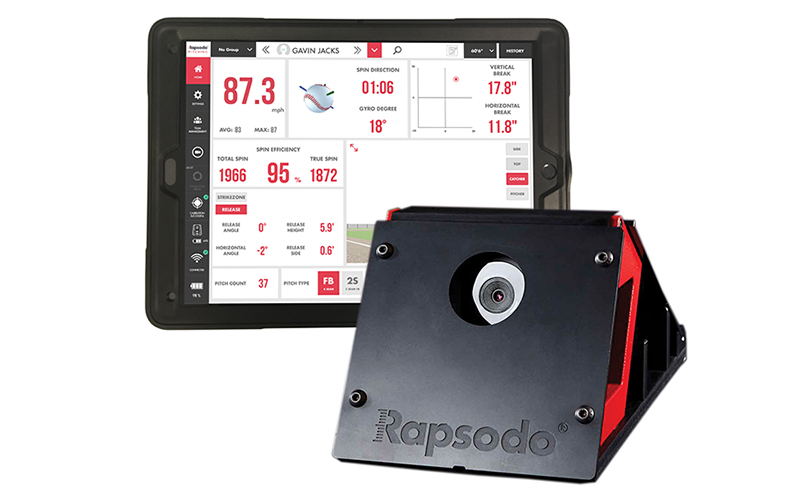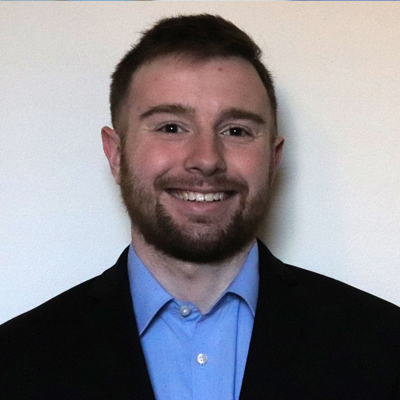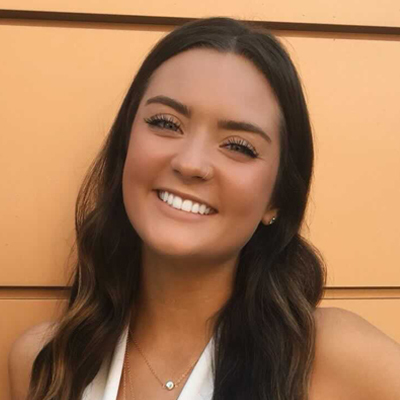Smith has been especially receptive. Longley recalls a recent conversation with ASU’s skipper about lineup construction, and the recent trend of batting a team’s best hitter second in the order. Smith jumped in to say that he was one of the first college coaches to do so, batting Nationals slugger Kyle Schwarber second during their time together at Indiana University.
“You talk about a guy (in Smith) that’s been around the game forever, but continues to adapt, and wants to learn more,” Longley said. “He’s not satisfied with the same strategy he had back in ‘95. He wants to be a better coach. And that’s why he continues to have success and gets players in here and gets players that move on to the next level.”
Since the advent of the MLB amateur draft in 1965, Arizona State has produced 450 selections and 111 major league players, second only to only Miami-Dade College and the University of Southern California, respectively, among all colleges and universities.
ASU will likely add at least two more players to their list soon. Outfielder Hunter Bishop was selected 10th overall by the San Francisco Giants in 2019, and corner infielder Spencer Torkelson was picked first overall by the Detroit Tigers one year later.
Longley said that his staff shows ASU’s younger players video of Torkelson and Bishop, along with recent MLB draft selections Gage Workman and Trevor Hauver, comparing their swings from their freshman season to their junior year as an example of how they all improved during their time with the Sun Devils.
As an overall teaching tool, both Longley and Olsonawski believe in the importance of video as an easily understood medium to help communicate high-level concepts to players.
“I can understand this stuff. I can tell them this stuff. (But) I don’t know if they comprehend it,” Olsonawski said. “So at this point, what we can do is we take stuff they can visually see … it’s a lot easier to just be able to show them.”
One video teaching tool Olsonawski uses for his players is pitch overlays. Popularized by Rob Friedman, known as “Pitching Ninja” on Twitter, a pitch overlay places video of one pitch type directly over video of another. Playing both pitches at once allows for a clear visualization of similarities and differences between the two pitches, such as movement, location and release point.
Olsonawski will also show players video of current MLB pitchers who have similar physical builds, pitching motions and pitch repertoires as their own.
“To be able to say, like, (redshirt junior Justin) Fall, he’s looking like a James Paxton comp (comparison),” Olsonawski said. “I can say, ‘Hey, go home, we’re going to watch video on this guy. That’s essentially the same mechanically, you know, same mechanics as what you have.’ ”
Fall began the season as a potential closer, but injuries forced him back to the rotation. There, he’s been effective as the 6-foot-6 left-hander throws his fastball in the mid-90s from an extreme downward plane because of his height.
On the other end of the physical spectrum is redshirt sophomore Tyler Thornton, one of ASU’s analytical darlings. The right-handed pitcher, who transferred from Saint Mary’s before the 2020 season, doesn’t throw particularly hard. His fastball usually averages in the high 80s or low 90s.
But Thornton produces an extremely high spin rate, putting him at about 27 or 28 Bauer units. This makes Thornton difficult to hit when combined with a relatively high vertical approach angle, especially when he locates fastballs high in the strike zone.
“He will probably pitch in the big leagues because it is such an extreme,” Longley said of Thornton’s approach angle. “(His) velocity isn’t in the top of our team, but he’s going to get guys out because he is different. He’s a top-of-the-pyramid type guy when it comes to that.”
ASU also has four undergraduate assistants who help run some of the technology during games. Juniors Ben Castiglia and Joey Rusnack and sophomores Jake Sher and Cameron Deck are in the press box for every home game managing Synergy, Yakkertech and PITCHf/x.
Longley and Olsonawski then aggregate the data the four collect, compiling relevant information into reports through a program called Baseball Cloud. The two create data dashboards that can be easily understood by players and other coaches, who also have access to Baseball Cloud.
The recent hires of Longley and Olsonawski show a new emphasis on analytics-based development for ASU, and it isn’t stopping there.
The school built the Malone Hitting Complex in 2019, part of $4.8 million in renovations to Phoenix Muni. Now, construction is underway on a state-of-the-art pitching lab attached to the right field bullpen. The lab will house, among other player development tools, high-speed Rapsodo cameras.
Just ‘play the game’
The Sun Devils aren’t alone in their focus on data. While not yet as extensive, ASU’s in-state rivals, Grand Canyon University and the University of Arizona, also have their own growing baseball analytics teams.
GCU’s numbers department is led by Rock Hudgens, who manages the Lopes’ analytics staff, otherwise known as the “A-team.” They use Synergy to track in-game numbers and compile pitching and hitting reports for upcoming opponents. Like ASU, they use Yakkertech and Baseball Cloud.
The Lopes do not solely rely on the numbers when analyzing their players, Hudgens said. But he adds that the data has helped in certain instances.
“One of our harder throwing guys was not doing so well in the fall. And we were kind of wondering why because he was the hardest thrower,” Hudgens said. “We kind of sat down and saw some of the numbers and saw that his horizontal break was almost zero … and so for that example, this is a great tool because we’re not necessarily getting so involved in the numbers that it’s taking away from other stuff.”
But as the director of analytics and operations with the Lopes, Hudgens “wears a lot of hats” on the team, and not just within the analytics department. He also organizes GCU’s team budgeting, scheduling and “day-to-day operations stuff.”
Cameron LeBlanc, like Hudgens, holds a “jack-of-all-trades” position at Arizona. One of his primary responsibilities is heading up the Wildcats’ video and analytics department.
LeBlanc is in his second year in the role, in which he manages a team of “managers” who help collect Trackman data, which uses radar to measure on-field movements. They also shoot video.
UA and GCU have found success on the field this season, despite their less analytically driven approaches than ASU’s. And Grand Canyon is even winning games that the underlying numbers suggest they shouldn’t win.
“Absolutely numbers help, but it’s not everything, that’s for sure,” Hudgens said.
Hudgens has had more than his fair share of debates with his father about the usefulness of analytics and technology in baseball. Now the bench coach for the Toronto Blue Jays, Dave Hudgens hasn’t been a fan of the data-driven direction the game has taken.
But Rock agrees with his father that, given how difficult of a sport baseball is, keeping the game as simple as possible is the best way for players to learn and develop. He isn’t married to the data, despite being GCU’s analytics guru.
“I really don’t think, as a player, you should be thinking about that kind of stuff – especially when you’re actually in a game,” Rock said. “I think you should just clear your head, clear your mind and just frickin’ play the game.
“But off the field, I think you want to be a student of the game.”
Longley argues that technology and data-driven analysis in baseball have raised the level of play from a pitching perspective, but perhaps at the detriment of hitting development.
“Guys are throwing harder than ever. Guys are developing pitches that are more effective than ever,” said Longley said, who believes that hitting will “go back to being a bit more old-school,” with greater focus on pitch-by-pitch adjustments and improved motor skills at the plate.
“Now, technology-wise, we’ve caught up with pitching, right?” Longley said. “But until we’re able to make that adjustment and then take it to the field, raise OPS and lower strikeout numbers, improve efficiency – that’s the disconnect. I think that’s where the game needs to see improvement.”
Longley said that disconnect explains a recent trend. Teams are shying away from the traditional stats-only types of employees who have dominated front offices in the 21st century. Instead, teams are hiring former players with similar skills in the hopes that they can translate the numbers.
The Texas Rangers and Philadelphia Phillies hired former players Chris Young and Sam Fuld, respectively, as general managers during the 2020-21 offseason.
“I think we’re seeing a little bit of a turn, especially at the professional level of newer-school guys who are being let go by teams,” Longley said. “And we’re kind of going back to – not necessarily old-school – but guys who are more inclined to preach for success in the game, and not necessarily so much on the computer reading.”
What’s next in baseball technology? LeBlanc points to Hawk-Eye, an advanced video tracking system originally popularized in tennis. MLB implemented Hawk-Eye in 2020 to replace Trackman and the newer technology is able to measure much more specific movements than Trackman, including biomechanics of the players.
While more universally accepted now than ever before, the debate over analytics rages on at all levels of the game.
Some coaches are intrigued, but wonder how a school with limited resources, especially at the high school level, can use data to make a difference. Traditionalists reject it in favor of keeping baseball the way it has always been.
But to Shabansky, the recent data convert, the solution is simple: blend the old with the new.
“For the guys who are skeptical about it, I try to tell them that it’s a blend of old-school stuff and things that you use to help guys get over issues or fix a problem or develop a pitch,” Shabansky said. “Ultimately, it’s just going to give you real-time data to figure out, ‘is it actually working?’”
Many of these “new-school” ideas have existed for decades, even if they weren’t spotted by a computer program. Opposing defenses often shifted on Red Sox legend Ted Williams during his heyday. Coaches have always taken notice when a pitcher’s fastball has “rise” or a batter hits a ball particularly hard.
The difference is, there are now ways to measure those observations. And to Shabansky, that means there’s no excuse for ignoring data.
“Honestly, for the skeptics out there, it’s not changing old-school ways or changing how to help people,” Shabansky said. “It’s just helping you determine the ways a lot faster.”





